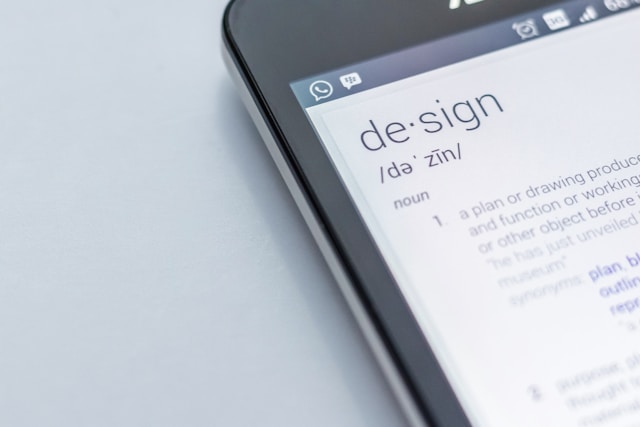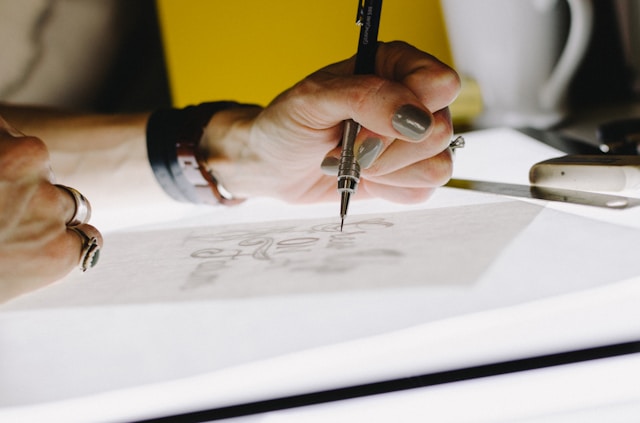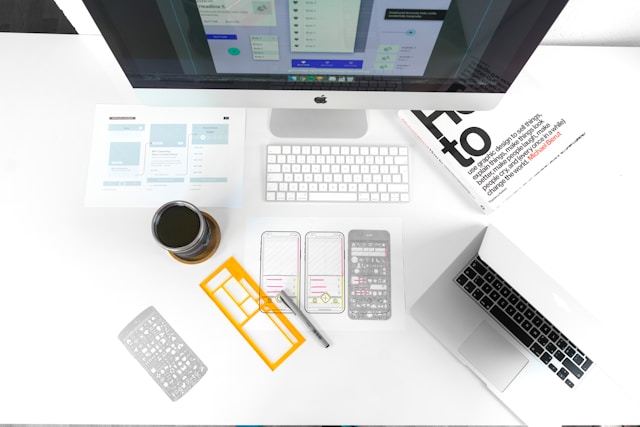If you had to describe a great digital product, what would you say? You might mention the aesthetics or the layout. Whatever you say, the truth is that all good design comes back to its users. As New York-based illustrator Frank Chimero argues, “People ignore design that ignores people.” In other words, user centered design is the only way to build truly great products.
In user experience (UX), you always need to keep your users at the heart of what you do. That way, you can build products that are genuinely helpful and enjoyable to use. At the end of the day, this is what makes your products stand out in a competitive marketplace.
Here at Page Flows, we’re experts in UX. Here’s everything you need to know about user-centered design, including its principles and process.

What Is User-Centered Design?
Firstly, what is user-centered design? This process is a core method of doing UX design. It’s all about focusing on the real users who interact with the product, carefully considering their needs. In this method, the design team involves users from the beginning of the process. By centering real users and valuing their opinions, the team can create truly useful products.
The way to do this is usually through careful research methods. These are often qualitative, including techniques like interviews and surveys. That way, the team doesn’t just reduce its users to a set of numerical data points. Instead, the designers work to understand and empathize with their users.
Like most UX, user-centric design is also an iterative process. So, users are also heavily involved in the feedback process. Aim to obtain feedback throughout the design and after launch. That way, you can hone your product to make it the best it can be.
According to PWC, customer experience is everything. In fact, 32% of customers surveyed said they would stop doing business with a brand they loved after one bad experience. This is about brands they already love. So, with your website, you have one chance to impress them; you need to make it a good one. With user-centered design, you can.
Human-Centered Design vs. User-Centered Design
You might also have heard the term ‘human-centered design.’ Is this different?
Think of it this way: all users are humans (unless you’ve created a first-of-its-kind app for cats). But not all humans are your users. So, user-centered design revolves more specifically around your target audience.
The key to user-centric design is to think about the user personas who will interact with your product. You might even need to work within different segments of this audience. However, the general gist is not to design for everyone, just for your users.

User-Centered Design Principles
There are five key user-centered design principles. No matter who you’re designing for, keep these in mind.
1. Start With Your Users
Perhaps the most important of all the user-centered design principles is to start with your users. This means involving them in the process from the very beginning.
Otherwise, you could start designing a product only to find that it gets poor feedback down the line. This approach ensures that you get off on the right foot.
2. Be Empathetic
All user-centric designs should be empathetic. Think about how you can solve your users’ pain points and create a product they genuinely find useful. It’s not just about competing with other brands; it’s about putting your users first.
3. Invite Feedback
Feedback is a central tenet of user-centric design. Ideally, you should incorporate multiple feedback loops. Try to conduct usability tests with quantitative data alongside surveys, interviews, and more. Also, gather feedback from within your team and from real users. The more feedback you get, the better your product will be.
4. Stick to Good Design Principles
As always, you should stick to the basics of UX design. Make sure you follow the usual usability heuristics to ensure that your design is on the right track. When it comes down to it, user-centric design isn’t all that different from regular UX.
5. Remember It’s Iterative
User-centric design is an iterative design process. Those feedback loops you incorporate are essential, but they’re meaningless if you don’t utilize the feedback. It’s rare (or even impossible) to create a perfect design. As time goes on, you’ll need to iterate, improve, and adapt.
User-Centered Design Methods
User-centric design always begins with research. There are tons of research methods you can use, and in fact, it’s better to employ more than one. Here are some of the most popular.
Surveys
Surveys can help you obtain large volumes of data quickly and for a relatively low cost. They’re a great way to gauge general opinion about your features. Plus, depending on the survey or questionnaire style, you can obtain either qualitative or quantitative data.
However, you need to be careful to craft effective, neutral questions.
Interviews
Interviews are one of the best methods for gaining qualitative data. This format allows UX researchers to dig deeper into the feedback and learn more about their users. You can choose to do lab-based interviews, perform them remotely, or conduct contextual inquiries.
The cons are that this method is more expensive, and you often get a smaller sample size.
Focus Groups
Like interviews, focus groups give you valuable qualitative data. Here, a group of users collectively share their thoughts. This way, you can cover multiple perspectives at one time.
Again, though, you need an experienced researcher, and you get a smaller sample size.
Usability Testing
Traditional usability tests are also great ways to gather feedback. Here, the user interacts with the product and performs a particular task. The researcher gathers quantitative data in the process, such as the time taken to complete the task. You’ll need a prototype to work with.
In some tests, the user ‘thinks aloud’ while completing the action. Or, they perform an interview following the test. This provides a broader range of feedback.
Card Sorting
Card sorting is a popular UX research method that assists with the initial information architecture. In this task, users organize the content by categories in a way that makes sense to them. This can help you with the taxonomy and navigation because it shows what’s intuitive to your users.
Participatory Design
Participatory design involves a variety of users contributing directly to the design process. This often includes members of the design team, shareholders, and other employees. That way, you get a range of ideas, some from actual users. Again, though, this means you get a small sample size.

The User-Centered Design Process
With these methods in mind, you can begin the user-centered design process. Generally, there are five phases:
- Research
- Goal setting
- Designing
- Evaluating
- Iterating
Let’s cover the steps of the user-centered design process in more detail.
1. Research
You always need to start with research. First of all, this research needs to understand who your target user is. That way, you can start to design the product around them.
Solid research is the foundation of the entire project. So, start by conducting competitor analyses to find out what your target market might be. From there, you can develop user personas (there might be more than one). One trick is to make your personas as specific as possible.
If you’re designing a fitness app, knowing exactly who is going to use it will help you a lot later. Targeting women aged 18-24 is generic. However, targeting Sophie, aged 24, a college grad who likes running and pilates, gives you more to work with.
You also need to understand the user goals. All your users have a reason for using your product. What is it? How can you help them? You can uncover these goals through research, ideally surveys and interviews. You can include details in an empathy map.
2. Define Your Goals
Later, you’ll need to define your business goals, too. In user-centric design, you always want the best for your users. However, your best ideas might not be feasible, at least not immediately. So, you need to take some time to define your goals and limitations.
Ideally, your product should be a win-win for both your business and your users. So, at this stage, try to define the scope of your project and what success looks like to you.
You’ll need to involve various stakeholders at this stage. People beyond the design team will need to agree, so this phase might involve some back and forth.
3. Ideate and Build
Next, you can start to come up with ideas. This is the fun part! You can create user journey maps and storyboards detailing how users will use your product to reach their goals. You can also start to more clearly define the information architecture at this phase.
Eventually, you’ll move on to creating wireframes, prototypes, and, eventually, clickable, usable products.
Crucially, you should test at every stage of the process. Test your paper wireframes, test your prototypes, test each interaction, and test the microcopy. Remember we said to always involve your users? This is where that principle comes into effect.
Constant testing is the only way to guarantee that you’re on the right track. Otherwise, you’ll have to revisit the entire design later down the line. Not only is this bad for users, but it’s also more expensive and time-consuming for the team.
4. Evaluate With Feedback
With your prototypes ready, you can conduct full usability tests. These will tell you how users actually interact with your product. Refer back to your goals–does your product hit the right requirements?
You can also use this time to reflect:
- How did you incorporate user research and feedback into the design?
- What went well in the design process? How can you repeat it?
- Can you do anything else to improve the design?
In all likelihood, your users will find issues with the product. So, this is the time to start making those gradual improvements.
5. Iterate
Iteration is the most important step of all. You need to constantly iterate, then re-iterate. That way, you can design the best product possible for your users. Even if your product is good enough to launch, you’ll likely need to change things later on. Technology changes, after all, and so do user preferences.
Having to change aspects of your design isn’t a bad thing. It’s a natural part of user experience design.

Nail User-Centric Design With Page Flows
User-centered design isn’t a difficult process; you just need to understand your users. Every design is unique because you’re designing for your users. Nevertheless, it never hurts to seek inspiration from proven products.
If you’re looking for design inspiration, look no further. Page Flows is a helpful resource for finding UX design ideas. Get started today to access our growing library of user flow recordings and finally stay up-to-date with current design trends.





